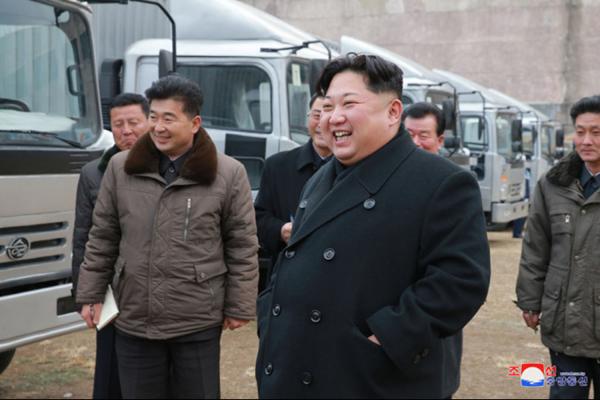
SEOUL, South Korea, Nov. 28 (UPI) — An initial assessment indicates that North Korea fired an intercontinental ballistic missile Tuesday, the Pentagon said.
“The U.S. Department of Defense detected and tracked a single North Korea missile launch today at about 1:17 p.m. EST,” Pentagon spokesman Col. Robert Manning said in a statement. “Initial assessment indicates that this missile was an intercontinental ballistic missile.”
If confirmed, it would be North Korea’s third ICBM launch following two in July.
Tuesday’s missile was launched from Sain Ni, North Korea, and flew about 1,000 kilometers before falling into the East Sea inside Japan’s exclusive economic zone, according to Manning.
It did not pose a threat to North America, its territories or its allies, he said, citing the North American Aerospace Defense Command.
“Our commitment to the defense of our allies, including the Republic of Korea and Japan, in the face of these threats, remains ironclad,” he added. “We remain prepared to defend ourselves and our allies from any attack or provocation.”
President Donald Trump told reporters in Washington he had Defense Secretary James Mattis monitoring the situation.
“We will take care of it,” Trump said. “It is a situation that we will handle.”
Mattis said the missile went higher than any previous shots North Korea had fired.
“It’s a research and development effort on their part to continue building ballistic missiles that can threaten everywhere in the world,” he said.
Mattis said North Korea’s action “endangers world peace, regional peace and certainly the United States.”
The first two ICBM launches triggered fresh U.N. Security Council sanctions against the communist regime and led to an exchange of heated rhetoric between U.S. President Donald Trump and North Korean leader Kim Jong Un.
Still, the regime carried out its sixth and most powerful nuclear test in September, heightening concerns of a potential military conflict on the Korean Peninsula.
North Korea stopped provocations after launching an intermediate-range ballistic missile over Japan on Sept. 15, raising hopes there could be an opening for talks between Washington and Pyongyang.
The regime has accelerated its pursuit of a nuclear-tipped missile capable of reaching the American mainland, claiming it is only meant to deter U.S. hostility.
South Korea responded to the latest launch with live-fire missile training near the eastern sea border with North Korea.
Mattis said the South Korean response makes “certain North Korea understands that they could be taken under fire by our allies.”
The South’s Army, Navy and Air Force staged the 20-minute combined drill close to the Northern Limit Line in the East Sea from 3:23 a.m. Wednesday local time, according to the Joint Chiefs of Staff.
It involved the Army’s missile unit, the Navy’s Aegis ship and the Air Force’s KF-16 fighter jet, each firing a missile at a simulated target set in consideration of the distance to the site where the North’s shot the ballistic missile.





